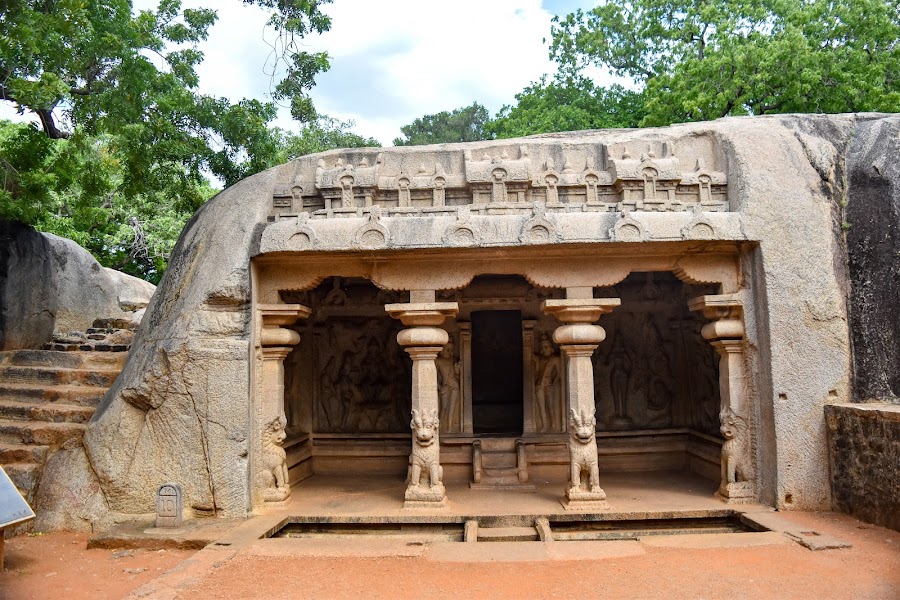
Varaha Cave Temple
Mahabalipuram, India
- Admire the Varaha panel depicting Vishnu.
- Capture memorable photos of the sculptures.
- Explore the intricate carvings of Hindu deities.
- Learn about Pallava dynasty architecture.
- Reflect on the temple's historical significance.
Known for:
Description:
The Varaha Cave Temple, a UNESCO World Heritage Site in Mahabalipuram, is a rock-cut cave temple showcasing exquisite Pallava architecture from the 7th century. Dedicated to Lord Vishnu's Varaha (boar) avatar, the temple features intricately carved panels depicting various Hindu mythological scenes. The most prominent is the Varaha panel, portraying Vishnu as Varaha lifting Bhudevi (Earth goddess) from the ocean. Other notable carvings include those of Durga, Gajalakshmi, and Trivikrama. The temple's simple yet elegant design, combined with the detailed sculptures, makes it a must-visit for art enthusiasts and history buffs. The cave's relatively small size allows for an intimate viewing experience, offering a glimpse into the artistic and religious beliefs of the Pallava dynasty.
History:
Carved out of granite during the Pallava dynasty rule in the 7th century, the Varaha Cave Temple stands as a testament to their artistic prowess and religious devotion. The Pallavas, known for their patronage of art and architecture, transformed Mahabalipuram into a flourishing center of rock-cut temples. The Varaha Cave Temple, along with other monuments in the area, reflects the early stages of Dravidian architecture. The temple's carvings provide valuable insights into the religious beliefs and iconography prevalent during that period. While the exact circumstances of its creation remain somewhat obscure, the temple's enduring presence speaks volumes about the Pallavas' legacy and their contribution to Indian art history. It has withstood the test of time, remaining a significant pilgrimage and tourist destination.